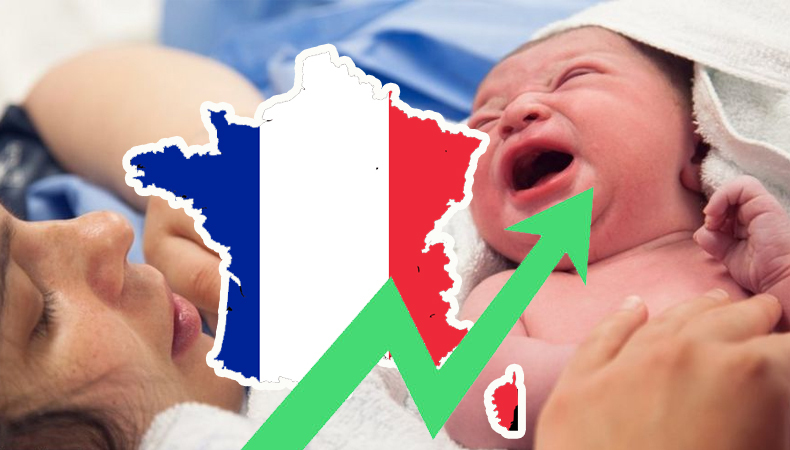
Which nations in Europe have the most and least live births per woman, respectively?
In the past three decades, more than 4 million babies have been born every year in the European Union, but these figures are on the decline.
4.09 million babies were born in 2021. Since 1960, this is the second-lowest number. 4.07 million babies were born in 2020, which was the lowest number ever.
Over the past 20 years, the fertility rate, which measures the number of live births per woman, has significantly changed across European nations. Between 2001 and 2021, it fell in 11 of the 27 EU member states.
In Europe, which nations have the highest and lowest fertility rates? How has fertility changed over the past two decades in Europe? In the EU, how do the proportions of kids with mothers who were born abroad and those who were born here differ?
The highest fertility rate is in France.
According to Eurostat, the EU’s statistical agency, France had the highest fertility rate among its fellow EU members in 2021 with 1.84 live births per woman. With 1.13 live births, Malta had the lowest rate. This average was 1.53 for the entire EU.
Czechia (1.83), Iceland (1.82), and Romania are next to France (1.81).
While a (partially) Mediterranean nation has the highest fertility rate, some other Mediterranean nations, including Malta (1.13), Spain (1.19), Italy (1.25), Cyprus (1.39), and Greece, have remarkably lower live birth rates per woman (1.43)
In other countries, the fertility rates were as follows: 1.72 in Denmark, 1.7 in Turkey, 1.61 in the UK, 1.58 in Germany, and 1.35 in Portugal.
The lowest number of children born in the EU was recorded in 2020.
The lowest number of children born in the EU was 4.07 million, which was recorded in 2020. There has recently been a downward trend in the number of births in the EU, which began in 2008, a year that saw 4.68 million births.
In the EU, the fertility rate rose by 8% between 2001 (1.43 births per woman) and 2021. (1.53 births per woman).
The Czech Republic saw the largest increase, at 59%, followed by Romania (43%), Slovakia, and Slovenia (both 36 percent).
Keep Reading
Turkey exhibits the greatest decline.
Turkey, one of the most populous nations in Europe, saw the biggest drop in fertility rates during this time. To put it another way, it decreased by 29% from 2.38 in 2001 to 1.7 in 2021. However, Turkey is still listed as having the eighth-highest fertility rate among the top 37 nations.
Additionally, the fertility rate decreased by 24% in Malta, 16% in Finland, 7% in Portugal, and 5% in the Netherlands. Spain and France saw a smaller decline (3% each), and the UK saw a decline of just 1%.
Women are more likely to have their first child when they are younger. How old are they?
In the EU, first-time mothers gave birth on average at 29.7 years old in 2021. Over time, this age has steadily increased; in 2013, it was 28.8 years.
In both Italy and Spain in 2021, the mean age of women giving birth to their first child was 31.6 years old.
Bulgaria had the lowest age at 26.5 years, followed by Albania (26.6 years) and Turkey (28.6 years) (26.7 years).
In other nations, women on average were 31.2 years old in Ireland, 31 years old in Greece, 30.9 years old in England and Wales, 30.1 years old in Germany, and 29.1 years old in France when they gave birth to their first child.
Are the mothers of these children native or foreign-born?
In Europe, the proportions of children born to mothers who were born abroad and those who were born here vary greatly. From 1% of all children in Serbia to 65% of all children in Luxembourg are foreign-born mothers. In half of the nations taken into consideration here, this value is 20% or higher.
Children of foreign-born mothers made up 29% of the population in Sweden, the UK, and Germany in 2021. In France, this percentage was 23%.
In countries other than Serbia, 3% or less of children were born to foreign mothers in Poland, Turkey, Lithuania, Slovakia, and Bulgaria.
Between 2013 and 2021, the proportion of children with mothers who were born outside of the EU rose in the majority of these nations.
With a 22 percentage point increase, Malta experienced the largest growth, followed by Greece (6 pp), Spain, Portugal, and Romania (5 pp for each country).




